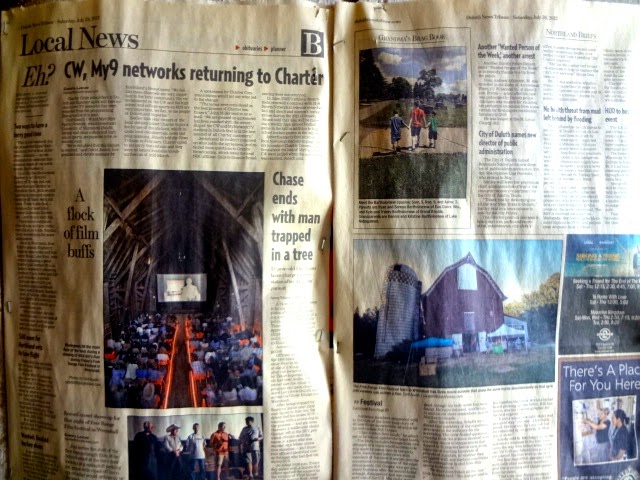 "There's something about the pace of life that makes it difficult to really slow down and assess where we're going and how we're doing on this journey called life." ~ Ed Young
"There's something about the pace of life that makes it difficult to really slow down and assess where we're going and how we're doing on this journey called life." ~ Ed YoungThere's something strange about the nature of "celebrity." Many young people dream of "making it" in the field of their dreams, but few really understand the hidden cost of being famous. It might be fun at first. But when you read between the lines of many stories, you see that the mystique is also a burden.
In his biography, Bob Dylan talks about the pre-eminent need to maintain a “normal” family somewhere away from the public eye. The task took a toll on his first marriage. Some Dylan observers even went so far as to speculate that his famous motorcycle accident in the Sixties was staged as a mechanism for getting him out of the public eye for a spell, some time to slow down and assess.
 This past weekend, I have been introduced to the almost incredible notion that Amelia Earhart, the first woman pilot to fly across the Atlantic, did not die in her attempt to be the first to fly solo around-the-world in 1937… that in fact it was a means for her to escape the public eye and get her life back.
This past weekend, I have been introduced to the almost incredible notion that Amelia Earhart, the first woman pilot to fly across the Atlantic, did not die in her attempt to be the first to fly solo around-the-world in 1937… that in fact it was a means for her to escape the public eye and get her life back.According to Robert Lookup’s “Highlights of Aviation History,” (Reader Weekly, May 8, 2003) Amelia Earhart’s disappearance over the Pacific in her Lockheed Electra remains one of the significant events of first half of the century.
The idea of celebrity did not begin with Warhol. Warhol just noticed the phenomenon and used his art to highlight this tendency to elevate people to mythical stature.
In writing last week about fads (The Madness of Crowds, July 3) I became keenly aware of the passion for celebrity that was even at that time being generated by the power of emerging media. Charles Lindbergh, in his epic 1927 trans-Atlantic crossing, became ultra-celebrated. And the consequences of that celebrity were ultimately dark. Five years later, his twenty month old son was kidnapped and brutally murdered in what newspapers called “The Crime of the Century.”
Did Amelia Earhart begin to become concerned about her own rising celebrity, her own lack of a private life, her own loss of control over her future? There has always been a measure of ambiguity over the details of her disappearance. Indeed, the event ultimately succeeded in removing her from the public eye. But what really happened? This website offers the following surprising answer:
The truth is, Amelia Earhart did not vanish… at all. Rather, she was laid low after she was reported missing, changed her name, and adjacent to the WWII era she resurfaced in the United States to live out the rest of her life in basic anonymity.
In 2009 a Hollywood film starring Hillary Swank will capture pop attention, but will there be kernels of truth in this story? Or will it add more fog than illumination?
My initial suspicion is that the Earhart story is not yet over.
* * * *
EdNote: This blog entry was written in July 2008. The burden of celebrity is something many have wrestled with. It's the downside of fame. What do you think?






.jpg)








































-page-001.jpg)









